The path to being a full-time independent artist or making a profit out of your artworks looks different for each person. The risk might be high but there are big rewards to taking the lead of your career as an independent artist. If you are wondering “How do I start selling art?”, you are in the right place.
Whether you’re an experienced artist diving into entrepreneurship or “artpreneurship”, a newcomer trying to find their way in the market, or someone with a solid art business looking to boost their profit, in order to sell your art you need to create or define your brand.
Your brand is what you do, what makes your work unique. Phrases like this might raise an eyebrow in the art world, but can take this marketing concept and put a twist on it to help you promote and sell your art.
The following is a comprehensive guide of strategies to sell art that you can follow, edit, and adapt to your own case scenario.


There are several paths to follow that can lead to a successful art business that is as original as you.
Contents
How to price your art: a formula for art selling
What is the value of an art piece? The question itself can spark an endless debate among artists, collectors, gallerists, shoppers, and art fanatics. We are all familiar with headlines highlighting million dollar auctions of art pieces, a number reached by combining the base price established by experts who work with the auction houses, and the market interest in the artist or their work.
But for those who are just starting to sell their art, how can they put a price on it? There are certain factors that can help establish a selling price:
–Materials (size, medium, and weight): type and cost
-Is it a unique piece, an art print, or a part of a collection?
–Your own wage: what is the worth of an hour of your work? How many hours did it take to complete it?
–Experience: years of work, previous sales, and history of exhibitions (if you have it).
–Take a look at the market: see the work of artists that create a similar type of art and medium and use their pricing as a reference.
Just like you evolve and grow as an artist, so does the value of your artwork.
Check this exclusive ArtPlacer Academy article “How to price your art for profit and growth: the ultimate guide”. Take the lesson by logging into your ArtPlacer account or starting your free trial.

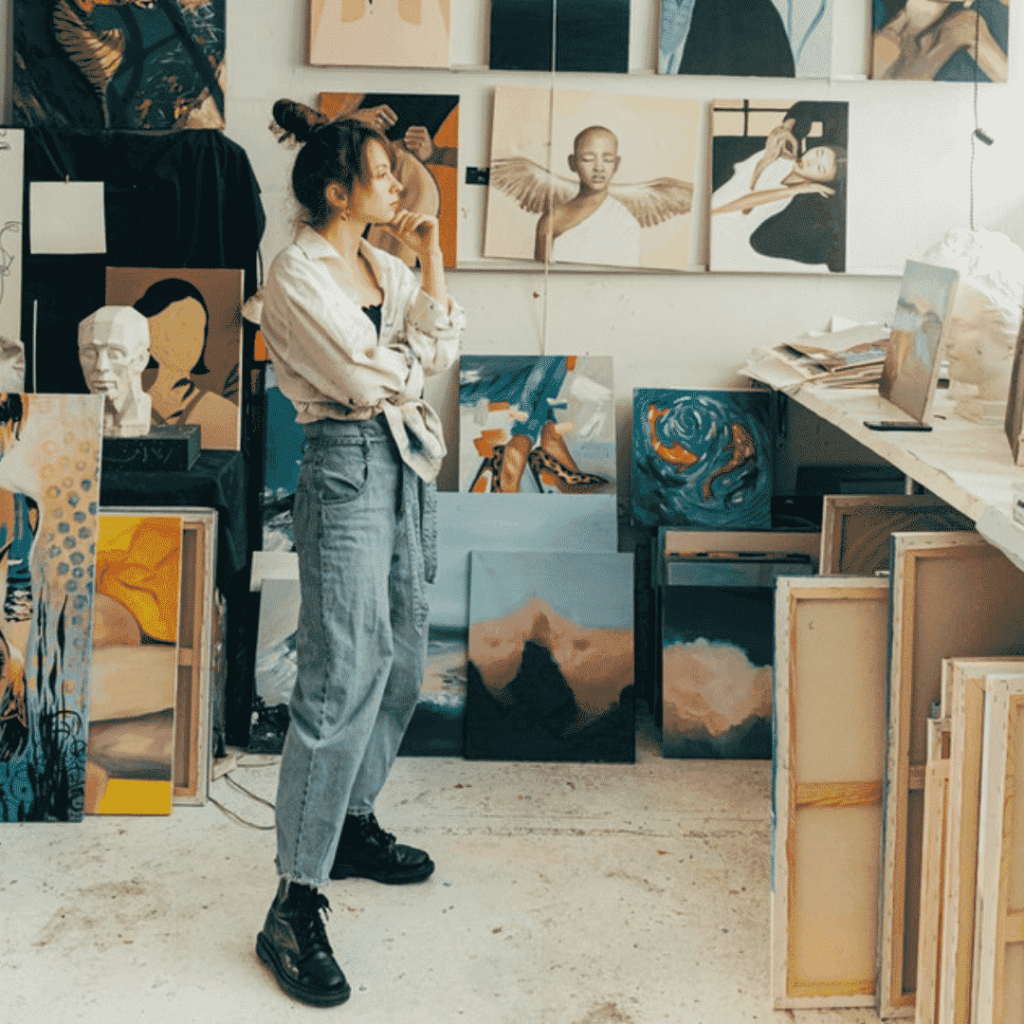
Establish good communication with your potential clients: let them know everything about your artwork.
How to create a seller art piece description
We all know an image is worth a thousand words but a collector looking for their next art investment might want more. In order to sell your art, you need a good description of it. A brief with the concept, process, and inspiration behind the piece is the starting point, but shoppers also need to know other characteristics that are more “tangible”.
A good art piece description should have the type of medium used, size and weight, the date when it was created, if it’s a single piece or part of a collection. And of course, a seller art piece description needs to come with high-quality pictures of the art from different angles, that can help anyone interested in it to see it in detail. If you want to walk the extra mile you can create a mockup of your artwork in a sample room to give your customers a better sense of how it will look in a space. With ArtPlacer’s Room Mockups, you can design different layouts to use on your website, social media channels, or marketplace.


Thanks to the internet, selling your art as an independent artist is now more accessible than ever.
10 ideas to sell art online
If you have made the decision to be an “artist-entrepreneur” and take the lead on how your body of work is going to be marketed, shared, and sold, you must know there is a lot of work involved, and also a lot of creative solutions to achieve that desired sale that can lead to you making a living out of your passion and craft.
Take notes of the following ten steps (and strategies) to sell art and create a unique strategy that feels true to you and your work.
Using social media to sell your art
As an artist, you might wonder what’s your role in social media. Building an online presence is like creating a puzzle: each piece tells the audience about you, your background, your current work, and your future aspirations. It can get as personal as you want or you can draw a clear line on how much of your personal life is shared.
Start with the basics: create an Instagram Artist Profile where you can share your artwork but also a bit of your journey as an artist. This can help you create a community of people interested in your work and some of them will most likely turn into customers.
If you want to raise the bet: start thinking about strategies to engage with your audience, use all the tools these channels offer to create a narrative around your art and point of view, let them know when your next exhibition is, and tell them how they can acquire your work. Make your work accessible to those who find it interesting enough to “like and follow”.
Maybe the next DM you get leads to a sale.
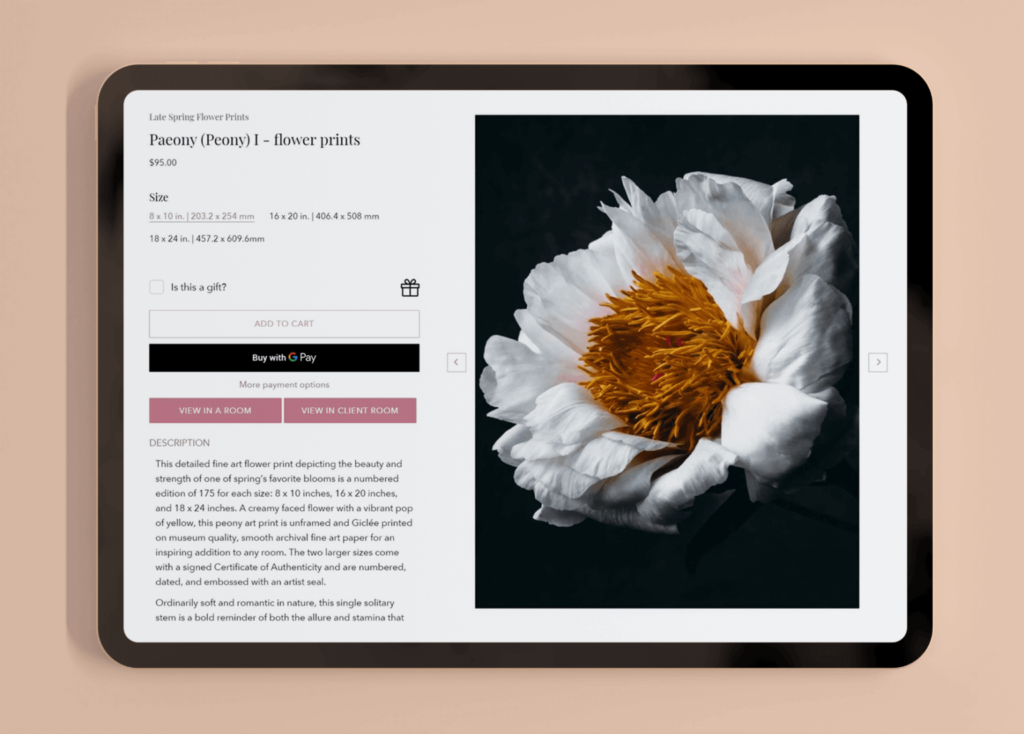
Make it easy for your customer to access the information they need to buy your art.
Create an artist website to sell your art
Today having a website as an artist is essential. Your professional website should work as a portfolio, cv, and a full showcase of art pieces (past and available), anyone who clicks on it should have a better understanding of who you are, what you do, and what your body of work is.
There are many tools online that can help you create a professional-looking website. Your page should be easy to browse, any friction in its functionality can lead to a loss sale opportunity. Take a look at ArtPlacer’s widgets: this variety of simple integrations helps potential clients get a “sample” of how your work might look in sample rooms, digital rooms, and even in their own rooms. With the help of AR technology, this specific widget creates a “try before you buy” shopping experience that helps those interested in your work make a more informed decision and go through the sales funnel with ease. Everything is available to them in just one click.

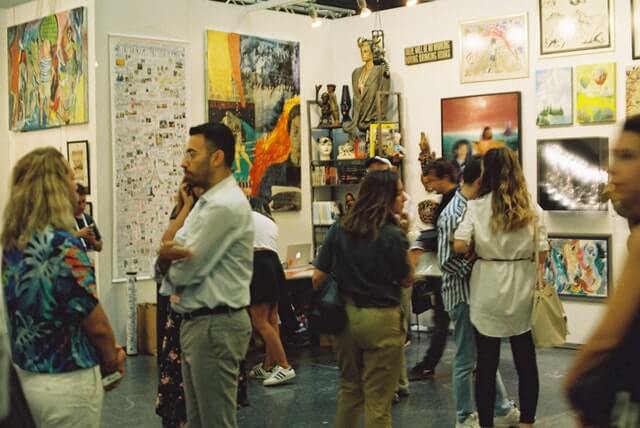
Online or in person, building relationships with people in the art world can lead to getting your work in front of the right eyes.
The art selling backstage: networking
Networking is an art. Creating a web of valuable connections between people in different areas of the same industry requires time, work, good communication, and a bit of charm. Networking is all about being honest and letting the world get to know you, reaching out to others with truthful interest and respect.
From gallery events, to the good-old LinkedIn or Social Media messages, artists today have many opportunities to reach out to others in the community. A good introduction is all it takes to begin conversations that can help you connect with potential customers, collectionists, gallerists, or just art lovers. The main goal is to build real relationships that enrich your journey as an artist, and in this exchange of information: recommendations, deals, and sales pop up naturally.
Do you feel ready to start the conversation?

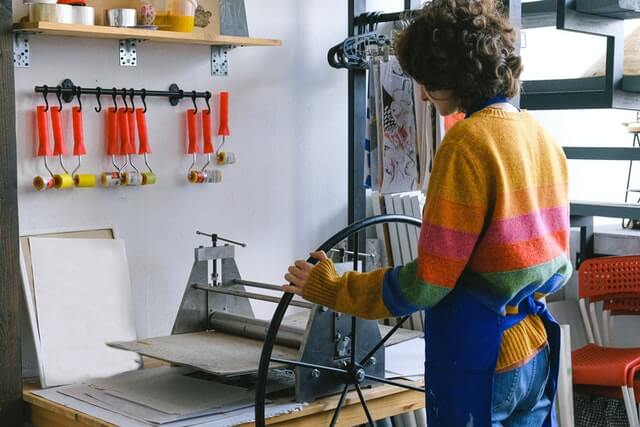
First-time shoppers and new collectors usually look for art prints as a first investment.
Selling your art prints: the profitable side of printmaking
If you are looking for a new stream of income (that also comes with a new creative outlet), Art Prints might be your go-to solution to sell your art. If you are wondering what an art print is, these are not copies or replicas but reproductions of artworks that have been conceived for it. An art print is made by transferring an original image design to a specific medium (canvas, art paper, and others), and not only the quality of them can raise the price of the piece, the creation of limited, numbered, and even signed iterations can raise the selling price of these art pieces and the interest of the market in them.

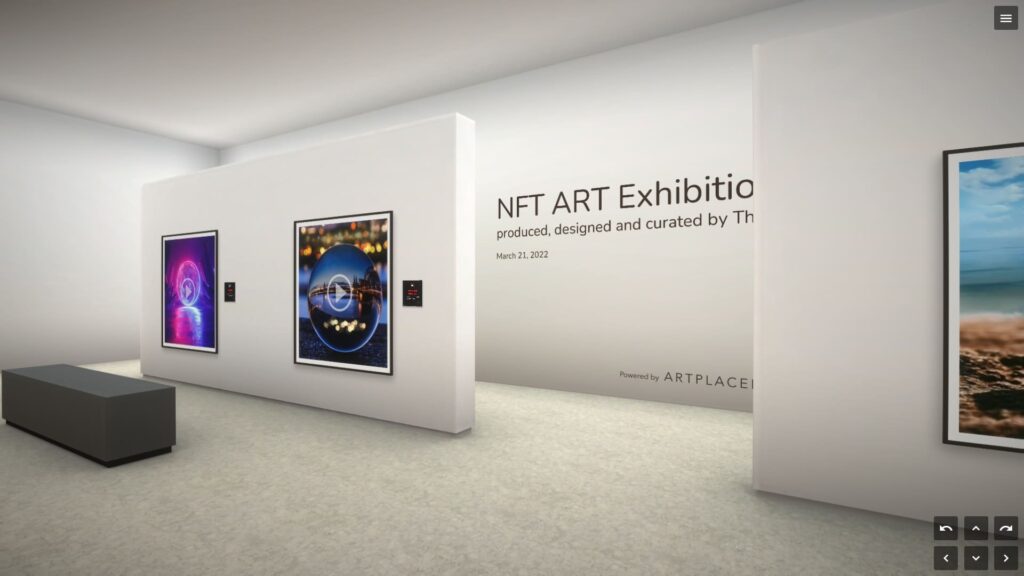
NFT virtual exhibition by Thad.
NFTs: the future of art selling, royalties, and copyright
For digital artists in particular and for all of those looking for a new way to sell their art, NFT’s and Crypto Art might be the best option, especially if they are naturally inclined to anything innovative in the digital world.
To clear out any doubt: NFTs are Non-Fungible Token, or assets that can’t be duplicated. The token is the single unit that is stored in the blockchain (the same used to create cryptocurrency) along with the original file or your artwork (anything from JPG to MP4 and GIF) and a traceable certification of ownership, none of these elements can be tampered with. Plus, you can be as creative as you want with NFTs: create a unique collection or add “real life” usage like access to a VIP event.The person who buys the NFT has the ownership of it but the artist can have the full copyright of the piece and can even secure a clause to receive a passive income in their selected cryptocurrency, every time that NFTs are sold.

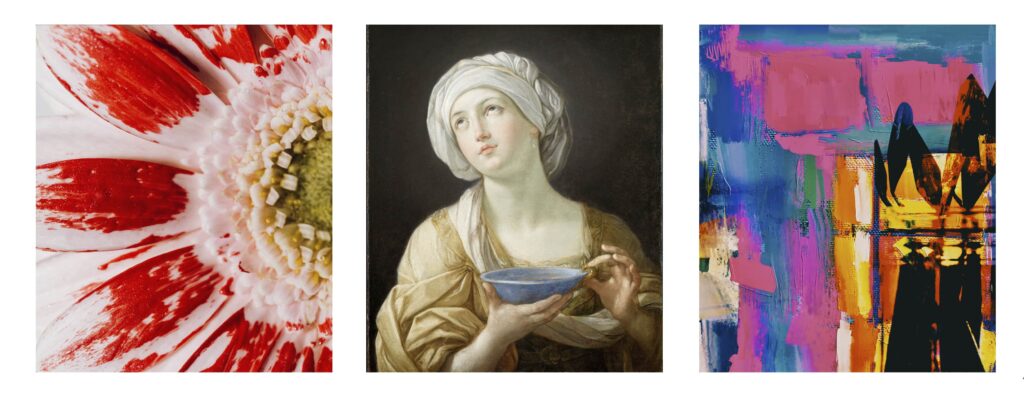
Your niche is that particular segment of the market interested in the subjects or characteristics of your work.
Cater to your niche: selling art to a specific market
In the mind of every artist, there is a voice saying “are you selling out?” every time they see a marketing term mixing into their line of work. Don’t be afraid! You are just enriching your knowledge about smart strategies that can help you reach people interested in investing in your work.
A niche is a segment of the market that has a particular interest in a subject, technique or type of art. It can also refer to their object of desire. Knowing which art niche your work falls into can help you reach new customers by creating better descriptions of your work, enriching your professional website, and knowing exactly which people you should reach out to network with. It gives you a more comprehensive view of what you do and how you can communicate it to others. Plus, your niche is already interested in the type of work that you do, it is all a matter of making it accessible to them. Or creating certain pieces or collections that directly cater to their interests.


Your artwork can be the centerpiece of a model room or a coffee shop and spark a buyer’s interest.
Consignment and loans: sharing leads to art selling
There are ways to sell your art and have it on exhibition without having to work directly with a gallery. Sell your art on consignment, and work directly with retailers who can promote and sell your art in their shops.
There are two common ways to work with retailers: by consignments (you “loan” them the piece for exhibition and both parties get a share of the profit when the art is sold) or wholesale (the retailer buys your art piece and resells it).Another way of promoting and selling your art is working with interior designers and private spaces like hotels, restaurants, pop-up stores, and others. Open up your mind and see well past the usual gallery exhibition, art is all around us: even in your doctor’s office. Having your art exhibited in these instances can spark someone’s interest and lead to a sale. This process might not be fast but it can lead to interesting opportunities.


With just a few clicks a customer can find and shop your artwork in an online marketplace.
How to sell art in an online marketplace
As mentioned before, your own website can work as an online store for your art, but if you want to give it an extra push or use that space only as a portfolio, you might want to sign up for an art marketplace. These types of platforms were created with the intention of facilitating the process of presenting your work online and selling them to an audience of art lovers and collectors.
Most art marketplaces work in a similar way: you need to create an account and list your art pieces (with proper images, descriptions, and prices). Your art will be available to visitors browsing around the marketplace and you’ll be in charge of handling their inquiries, sales, and even shipping. The platform might charge a commission per sale or request a monthly subscription fee for their service.
The benefit of joining an art marketplace is that they already have an audience interested in purchasing art pieces, and users can easily “stumble” upon your work through simple searches, tags, and categories. For example, ArtPlacer’s Discovery page helps galleries and artists make their work visible and reachable to art collectors.

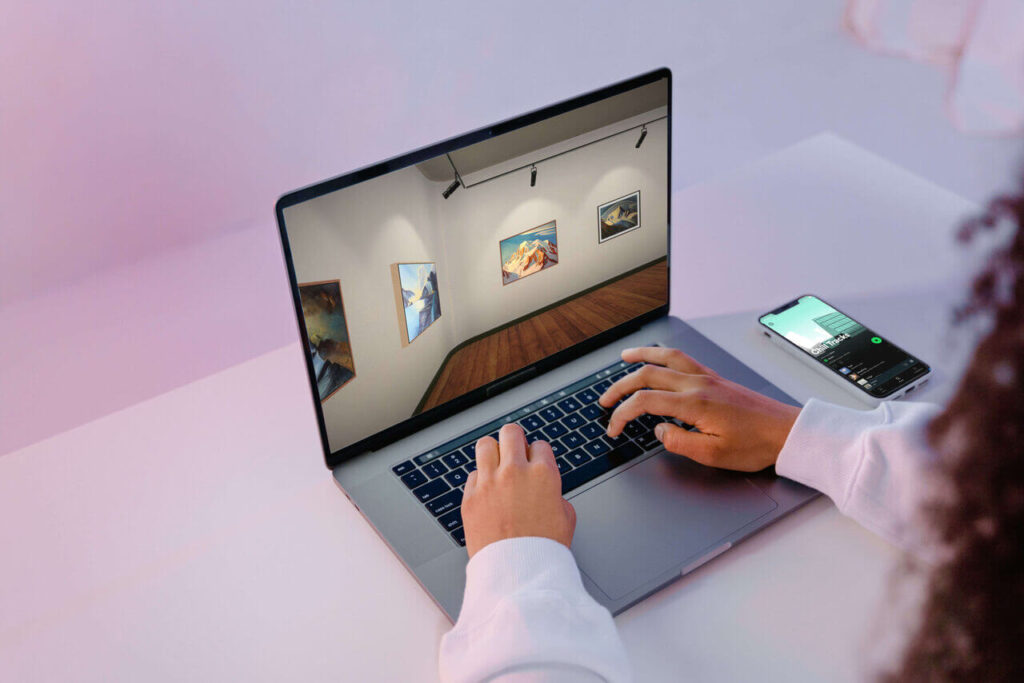
With the help of digital tools like gallery apps, you can create your own virtual exhibition accessible to all.
Create your own exhibition: selling art on your own terms
The peak of independence for an artist might be bringing their own exhibition to life, where they want it, how they want it. If you want to take a first dive into the experience, a 3D Virtual Exhibition is a good option, you can curate an interactive experience for your audience that can navigate a virtual gallery (just like they would do in real life), see your artwork, make inquiries and shop. You can host it on your website, make an event out of it and the best part is: that the virtual show is available 24/7 to anyone across the world.
If your goal is doing an in situ exhibition: this is the time and moment! You have the chance to experiment with the design of the space and showcase your artwork. To save funds and time you can create a digital replica with a virtual gallery creator to use as your guide for curation. The main goal is to create a show that attracts customers, enables you to network, talk to possible customers, and make it all a smart investment for you that can result in profit.
Are you ready to add the “artist-entrepreneur” concept to your creative endeavors? Sign up to ArtPlacer’s 7-day free trial and boost your art marketing strategy.

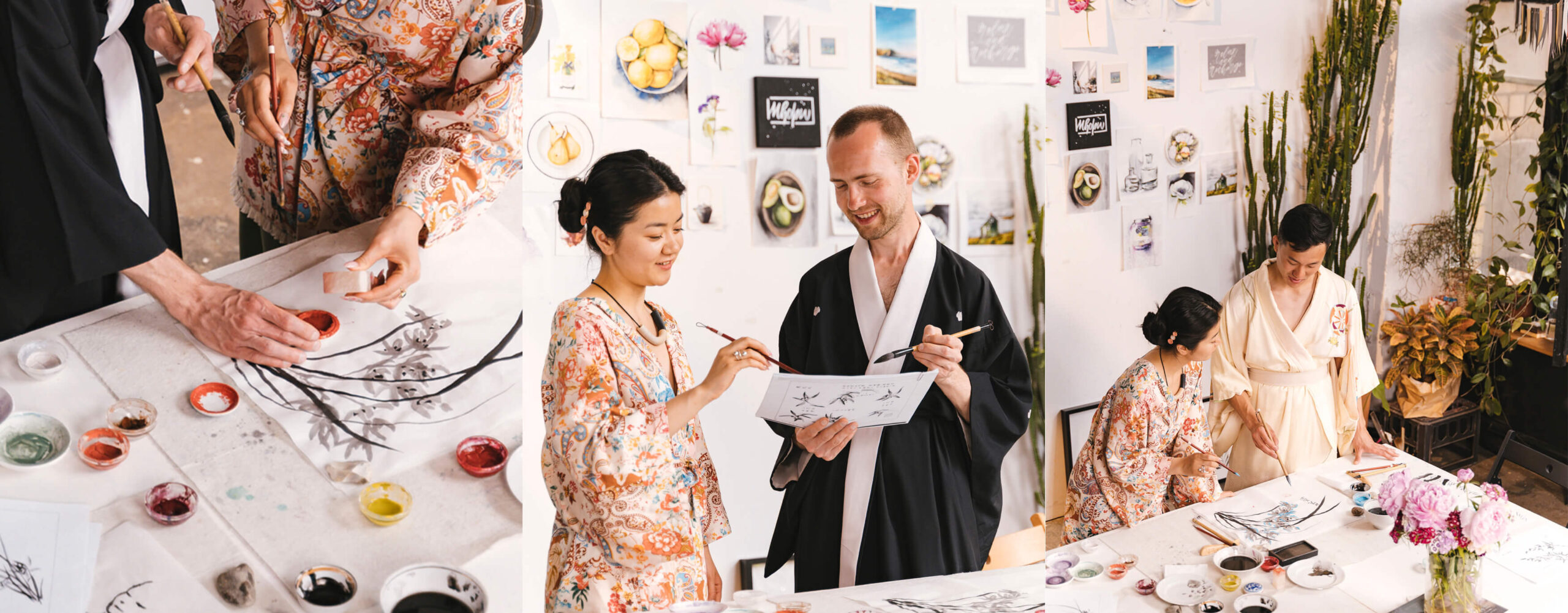


A great post guys. I’m just started exploring the world of online art sales and your articles really help!